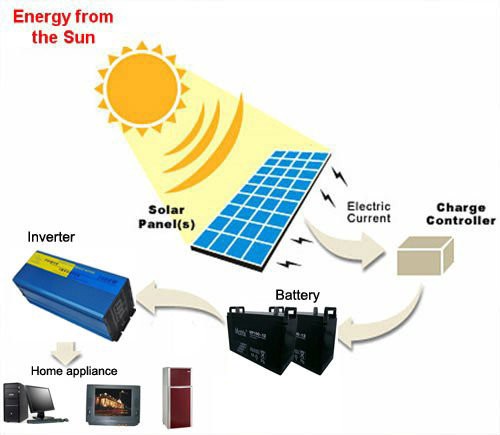
Solar energy is one of the most widely used renewable energy sources on the planet. It is a clean, renewable form of energy that may be utilised to power your house or company. But how is solar energy converted into electricity? In this blog post, we’ll take a look at the process of converting solar energy into electricity and explore how it works.
The process of converting solar energy into usable electricity involves capturing sunlight with solar panels, converting the sun’s photons into electrons, and using an inverter to convert the current from DC to AC. Excess electricity can be sent to the utility grid for use by others.
The process of converting solar energy into electricity
- Solar panels are made up of cells that are connected together. Each cell contains two layers of semiconductor material, such as silicon. One layer has extra electrons and one layer has missing electrons. When the two layers are combined, they form an electric field. This electric field acts like a one-way street for electrons. The photons in sunlight knock loose the extra electrons in the silicon atoms and they flow through the electric field to the other side of the cell.
- Solar panels are made up of photovoltaic (PV) cells. These cells are made of materials like silicon and thin film semiconductor. When sunlight hits the PV cells, the photons from the sun knock electrons loose from their atoms. This creates an electrical field across the PV cell.

- The solar panel is connected to an external circuit and the electrons flow through this circuit to power electrical devices or to be stored in batteries. Solar panels can be used to power homes, businesses, schools, and other buildings. They can also be used to power vehicles, electronic devices, and lights.
- The electrical field causes the electrons to flow through the PV cell, creating an electric current. The current is then sent to an inverter, which converts the current from DC (direct current) to AC (alternating current). AC is the type of electricity that is used in homes and businesses.
- From there, the AC electricity flows into your home’s electrical panel and is distributed throughout your home or business as needed. Any excess electricity that your home or business doesn’t use is sent to the utility grid.
Conclusion
Solar panels use sunlight to create an electrical voltage that can be used to power devices or stored in batteries for later use. Solar panels are made up of cells that are connected together and contain two layers of semiconductor material, such as silicon. When photons from sunlight hit the solar panel, they knock loose electrons from their atoms and these loose electrons flow through the solar panel to create an electrical current. Solar panels are becoming increasingly popular due to their environmental benefits and their ability to generate electricity without producing pollution or greenhouse gases.







